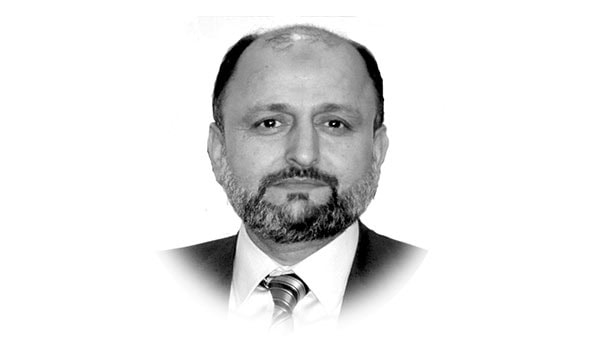Art of controlling
GENERALLY our perception about controlling is to grasp someone firmly through different means to ensure compliance.
This view further strengthened a couple of months back when I was invited by an organization to deliver a training session on controlling in day-to-day operations.
I think organizers were expecting some stringent theories or concepts to facilitate their hierarchies to fortify their control over others.
It was sheer surprise for most of the participants when I linked control with the goal/objective.
Success is linked with determination and commitment more than the ability and intellect. Having relevant capabilities and comprehension to perform is not uncommon.
But it is the resolve and the promise which defines the success of an individual or an organization.
Controlling as a function of management brings assurance and insistence in organizational operations.
Controlling in modern-day organizations starts right from the first day on the project/task starting as a feed forward control.
Controlling has a positive and necessary role in the management process to keep entire operation on the track and to avoid depletion of both material and human resources.
Controlling ensures that the right things happen, in the right way, at the right time and on the right scale.
Controlling is the pivot for organizational learning providing information about entire operation for pre, concurrent and post action analyses for continuing corrective measures to remain focused on achieving the objective.
A feed forward control is employed before a work activity begins to ascertain that objectives are clear.
Napoleon Hill once said, “There is one quality that one must possess to win, and that is definiteness of purpose, the knowledge of what one wants, and a burning desire to possess it.”
According to Remez Sasson, “Clarity of purpose/ objective is vital for the achievement of success and for making dreams come true.
It is one of the pillars of achieving plans and accomplishing success. It means knowing exactly what it is that you want.
Not something unclear and vague, but a complete, clear and detailed goal. Only when you know exactly what you want you can get it.
When there is clarity of purpose you know what steps to take. With clarity of purpose you focus on the goal without wasting time or energy.”
A feed forward control, work inputs, establishes proper directions of the team to tell everyone how to complete the task or in which order to pursue the given objective.
It also ensures that right resources are available. Significance of right and appropriate resources to achieve objectives can’t be emphasized much because quality of resources help organizations get the most out of people, tools and equipment.
Feed forward control focuses on quality of resources to avoid unnecessary delay, bring efficiency, strengthen planning and pre-empt bottlenecks well in advance.
Concurrent control, work throughputs, solves problems while they are occurring in the course of process when groups and organizations are implementing their strategies and plan of action to achieve set objectives.
It is of prime importance to monitor ongoing operations, a manager or a leader can’t afford to leave things at the mercy of circumstances.
It is his/her responsibility to focus on day-to-day happenings within and outside the group or the organization to control or eliminate unacceptable events for both effective and efficient outcomes from people and mechanical recourses to save time and reduce wastages.
Feedback which we usually use even in our everyday routine to seek response of relevant stakeholders about any activity is technically a source of critical information for any person, a group, a project or an organisation to spot deficiencies, to mark deviations, to observe gaps and to ensure that final result or the product is up to the desired standards.
Feedback control enables constant delivery of desired standard of performance and quality. It is the feedback which provides opportunity to reflect back to the entire process to eliminate mistakes from future course of actions.
Feedback control is linked with the work output thus solves problem after they occur and provides useful information for improving future operations.
There are some other dimensions of controlling such as internal and external control and bureaucratic and clan control.
People who have internal locus of control they exercise self-discipline to fulfil the job expectations and they form groups which set performance standards for themselves and realize dreams.
External control occurs through personal supervision and the use of formal administrative systems which is a kind of bureaucratic control that influences behaviour through authority, policies, procedures, job descriptions, budgets and day-to-day supervision.
Probably the most important type of control is known as clan control which influences behaviour through norms and expectations set by the organizational culture.
According to a website, “Clan control is an indirect form of control that uses shared expectations, values and social norms to encourage people to work toward organizational objectives.
This form of control often links to company culture and helps the organization reach its goals by motivating the people.”
There are four distinct steps in control process: step 1 — establishes objectives and standards, step 2 — measures actual performance, step 3 — compares results with objectives and standards and step 4 — takes corrective action as needed.
If our managers and leaders can master the art of controlling as a strategy to achieve objectives and maintain quality & standards then I think we can do wonders in every field from manufacturing to the service industry, from entertainment to the leisure, from health to the sports and from technology to the education sector by delivering excellence in each arena.
—The writer is Associate Professor Management Sciences, Head, Centre of Islamic Finance, COMSATS University (CUI) Lahore Campus.










